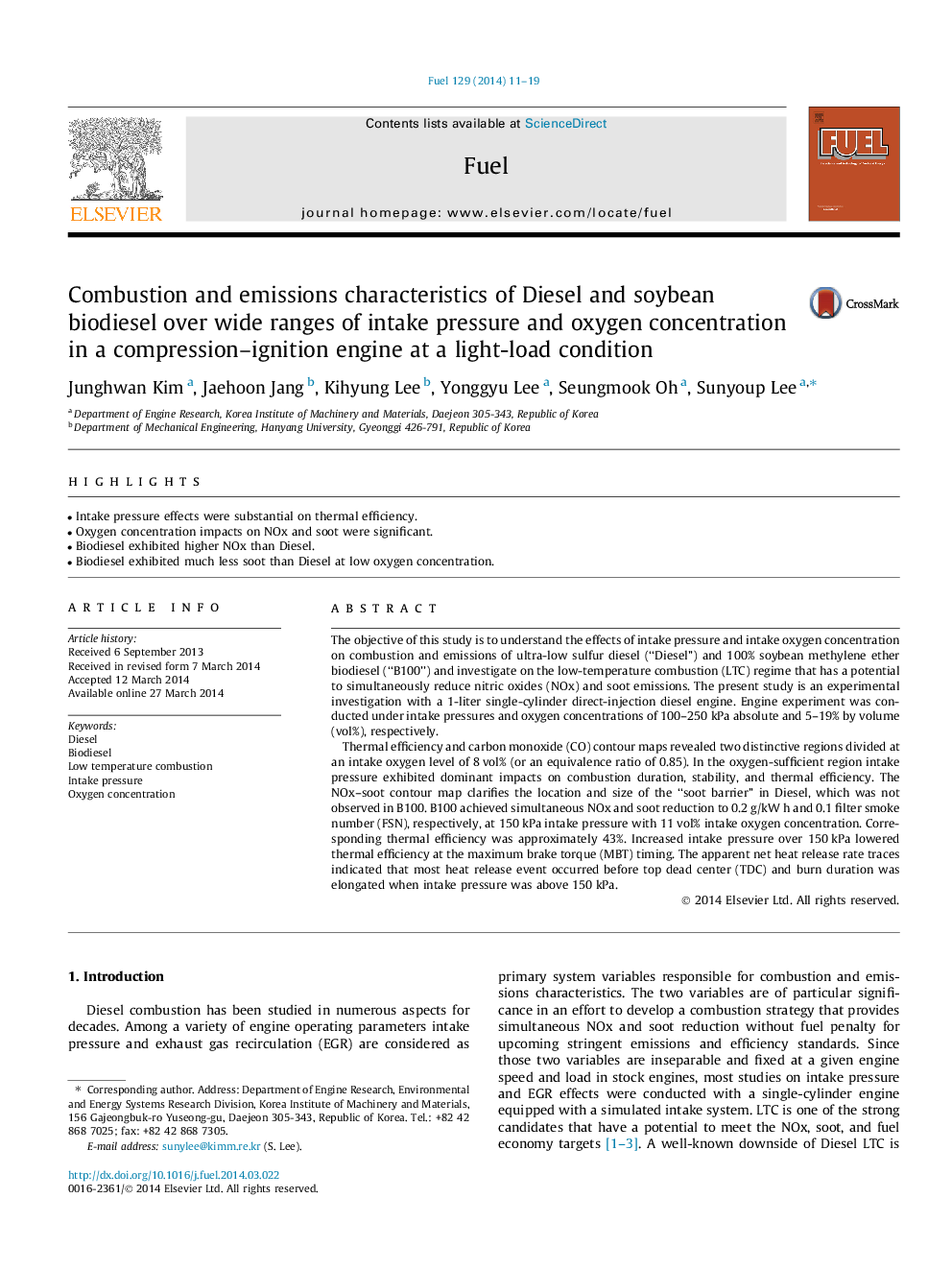| Article ID | Journal | Published Year | Pages | File Type |
|---|---|---|---|---|
| 6637474 | Fuel | 2014 | 9 Pages |
Abstract
Thermal efficiency and carbon monoxide (CO) contour maps revealed two distinctive regions divided at an intake oxygen level of 8Â vol% (or an equivalence ratio of 0.85). In the oxygen-sufficient region intake pressure exhibited dominant impacts on combustion duration, stability, and thermal efficiency. The NOx-soot contour map clarifies the location and size of the “soot barrier” in Diesel, which was not observed in B100. B100 achieved simultaneous NOx and soot reduction to 0.2Â g/kWÂ h and 0.1 filter smoke number (FSN), respectively, at 150Â kPa intake pressure with 11Â vol% intake oxygen concentration. Corresponding thermal efficiency was approximately 43%. Increased intake pressure over 150Â kPa lowered thermal efficiency at the maximum brake torque (MBT) timing. The apparent net heat release rate traces indicated that most heat release event occurred before top dead center (TDC) and burn duration was elongated when intake pressure was above 150Â kPa.
Related Topics
Physical Sciences and Engineering
Chemical Engineering
Chemical Engineering (General)
Authors
Junghwan Kim, Jaehoon Jang, Kihyung Lee, Yonggyu Lee, Seungmook Oh, Sunyoup Lee,
